As the UK entered lockdown #3 on 6 January, I was already pretty irritable. Christmas had been cancelled. I was incredibly upset as to how the UK Government handled the cancellation of Christmas. I’m all for being safe, but why give people hope if things are really bad? Once I got over my grumpiness, I started to think, right, how am I going to keep my spirits up over the next (potentially) several months of lockdown? Last year I hosted my very own at-home retreat, which I thoroughly enjoyed. But this time around I wanted to involve Victor, so then I thought of creating a staycation at home by “travelling” to a different country. We had already been doing different country themes when it came to our meal planning, so why not just go a bit further?
With some planning and dedication, it’s actually very easy to enjoy a fun-filled weekend with food and activities that feel a bit different than the regular day to day stuff. Picking a country to them the staycation around is quite difficult, but we chose Japan because it has been on my bucket list forever and I loved the idea of doing something quite foreign to my own reality.
 A huge part of travelling is trying out all the new and unique food! I recommend doing a bit of a Google search to try and find country or region-specific grocery stores. For example, in London, we have the Japan Centre. I had only been to the one downtown, which would have been too far to walk to (and during lockdown we’re not taking public transportation). But, I found out that the Japan Centre have a couple of locations, one being in Stratford. This was within walking distance of our home, so we were able to venture out there and buy tons of Japanese treats.
A huge part of travelling is trying out all the new and unique food! I recommend doing a bit of a Google search to try and find country or region-specific grocery stores. For example, in London, we have the Japan Centre. I had only been to the one downtown, which would have been too far to walk to (and during lockdown we’re not taking public transportation). But, I found out that the Japan Centre have a couple of locations, one being in Stratford. This was within walking distance of our home, so we were able to venture out there and buy tons of Japanese treats.
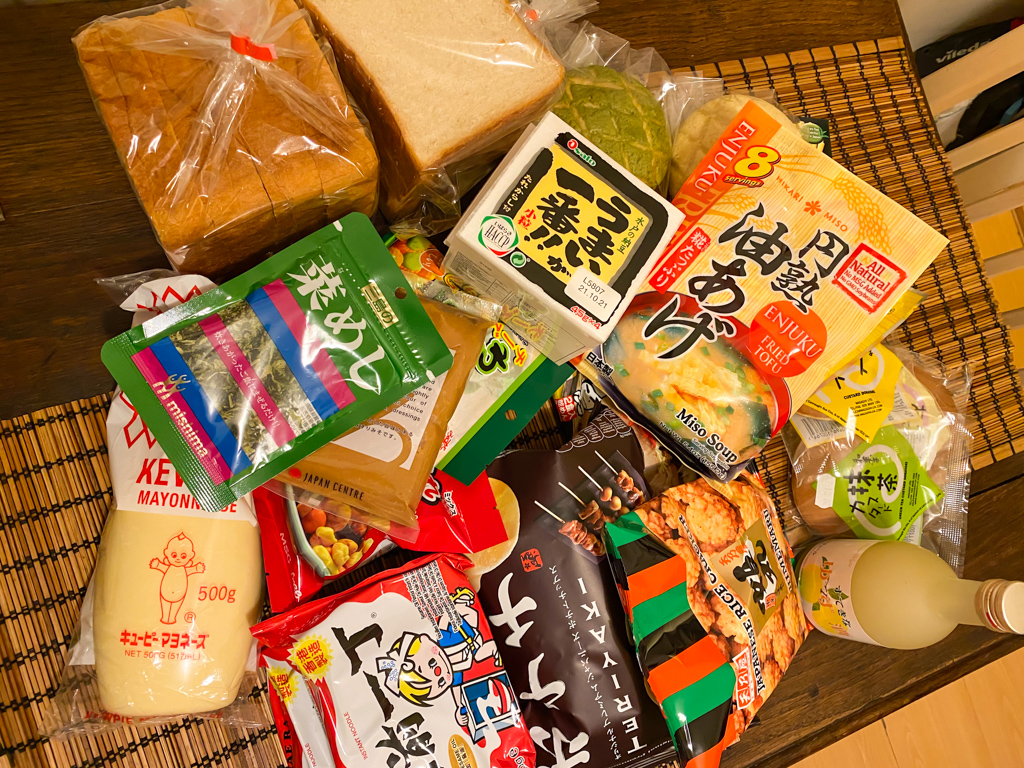 And so, our staycation started with “Welcome Drinks”. We drank Yuzu Sake and ate rice crackers while watching a short, animated history of Japan video.
And so, our staycation started with “Welcome Drinks”. We drank Yuzu Sake and ate rice crackers while watching a short, animated history of Japan video.
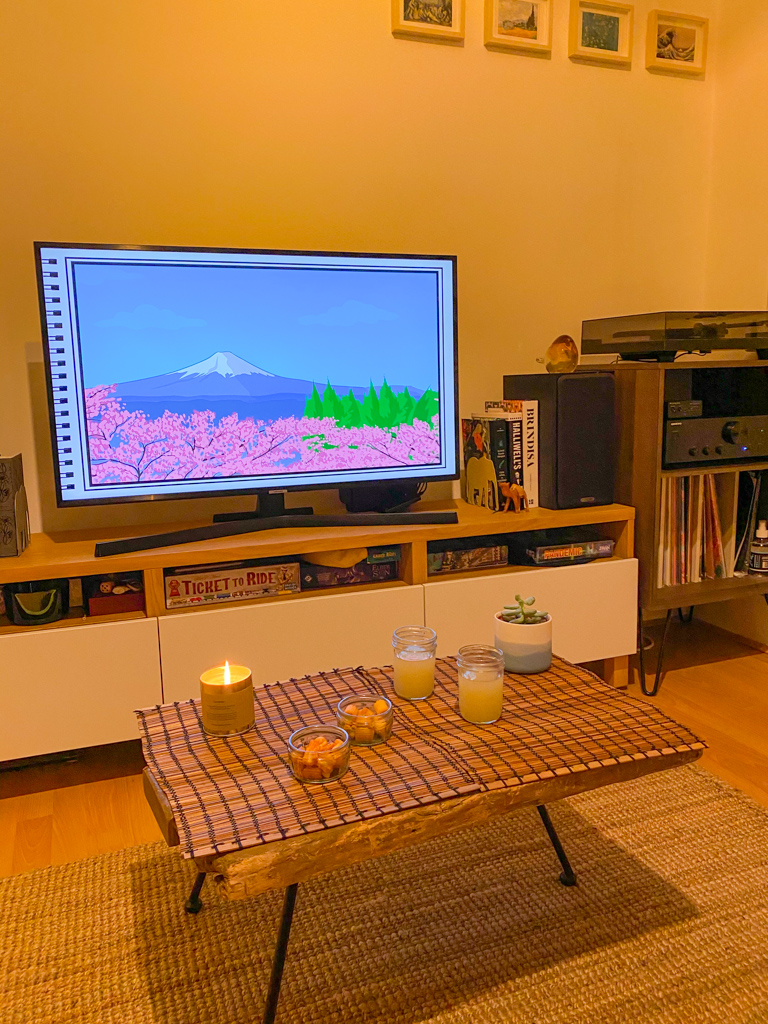
Virtual Tours
Okay, so normally staycation means staying in your own city but going on a vacation. Well, this version of a staycation was literally in our home, Covid-style. And while this means we couldn’t go out and visit any places (including some of the Japanese attractions we have in London), we did visit a ton of attractions virtually! Here’s a list of places we visited, and the links to virtual reality tours. You can either use virtual reality goggles or just watch them on your screen of choice as normal.
- Tokyo National Museum
- Todaiji Temple — This is a Buddhist temple complex, located in Nara. Its Great Buddha Hall (大仏殿 Daibutsuden) houses the world’s largest bronze statue of the Buddha Vairocana, known in Japanese as Daibutsu (大仏).
- Miyajima — Itsukushima or Miyajima is an island in Hiroshima Bay. It’s known as Miyajima (“Shrine Island”) because it’s famous for its Shinto shrine.
- Shirakawa-go — This is a small, traditional Japanese village showcasing a building style known as gasshō-zukuri. This style emerged during the Edo period.
- Makido Cave — This is a cave, located in Niimi. It’s a long limestone cave with an underground lake.
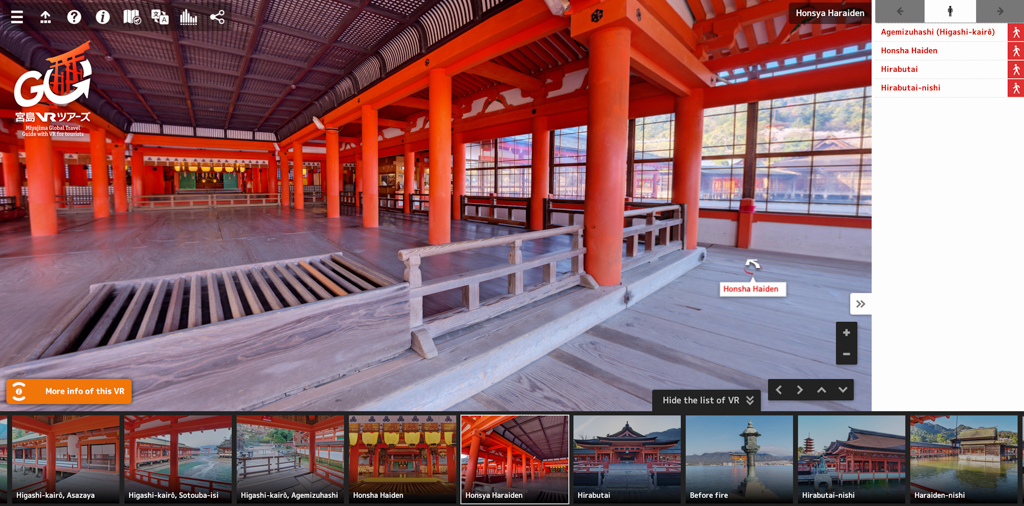
Mealtime
For our meals, we sat on the floor on some cushions, using our coffee table for dining. We also put backdrops on the TV while we ate. With the backdrops below, you can really set the tone and mood of the space.
One morning we had a traditional Japanese Breakfast. This comprises several components, some of which vary depending on personal tastes and preferences, but we had from what we could tell a pretty typical spread. A traditional breakfast will always have rice, so we had steamed rice, mixed with some furikake to add some flavour. We topped the rice with natto, fermented soybeans. This followed by a bowl of miso soup. We also had grilled salmon, rolled omelette and pickled radishes and onions.
 The typical, everyday bread in Japan is shokupan, meaning “eating bread”. It’s a white and pillowy square-shaped bread, perfect for toast or sandwiches. Once such typical sandwich is Tamago Sando (たまごサンド). It’s an egg salad tucked in between two slices of fluffy shokupan. And while it may not sound that exciting, I absolutely love this sandwich because of its subtle differences from western egg salad sandwiches. First of all, you need to use shokupan. Second, you need to find Japanese mayonnaise. The difference between Japanese mayo and western mayo is that the former uses egg yolks and rice vinegar, while the latter uses whole eggs and distilled vinegar. The result is that Japanese mayo is sweeter, tangier, creamier and thicker. It makes a world of a difference! I used this recipe from Just One Cookbook.
The typical, everyday bread in Japan is shokupan, meaning “eating bread”. It’s a white and pillowy square-shaped bread, perfect for toast or sandwiches. Once such typical sandwich is Tamago Sando (たまごサンド). It’s an egg salad tucked in between two slices of fluffy shokupan. And while it may not sound that exciting, I absolutely love this sandwich because of its subtle differences from western egg salad sandwiches. First of all, you need to use shokupan. Second, you need to find Japanese mayonnaise. The difference between Japanese mayo and western mayo is that the former uses egg yolks and rice vinegar, while the latter uses whole eggs and distilled vinegar. The result is that Japanese mayo is sweeter, tangier, creamier and thicker. It makes a world of a difference! I used this recipe from Just One Cookbook.
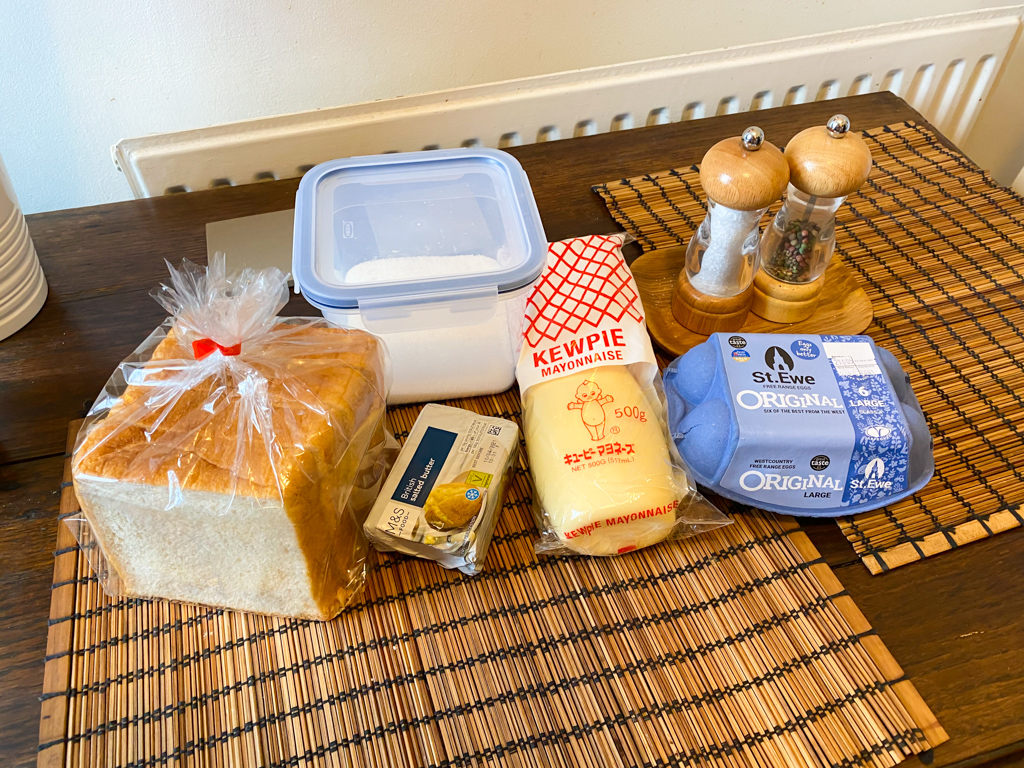
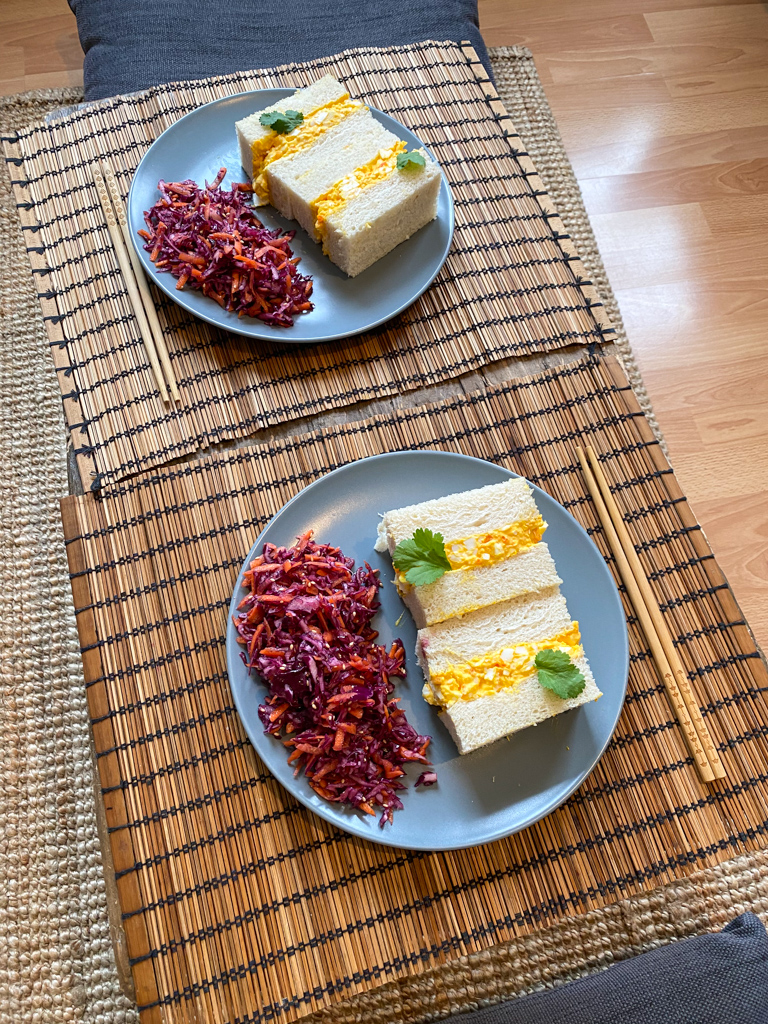 A staycation is also a wonderful opportunity to support local businesses. One evening we had to have sushi, so we picked up a lovely spread from Uchi. We went all out and got their sushi and nigiri bento box, consisting of:
A staycation is also a wonderful opportunity to support local businesses. One evening we had to have sushi, so we picked up a lovely spread from Uchi. We went all out and got their sushi and nigiri bento box, consisting of:
- soft shell crab
- seared beef
- tempura broccoli
- miso aubergine
- salmon avocado
- shiso daikon
- seared salmon nigiri
- seabass nigiri
- eryngi nigiri
- sesame carrot nigiri
Talk about a decadent and delicious start to a staycation!
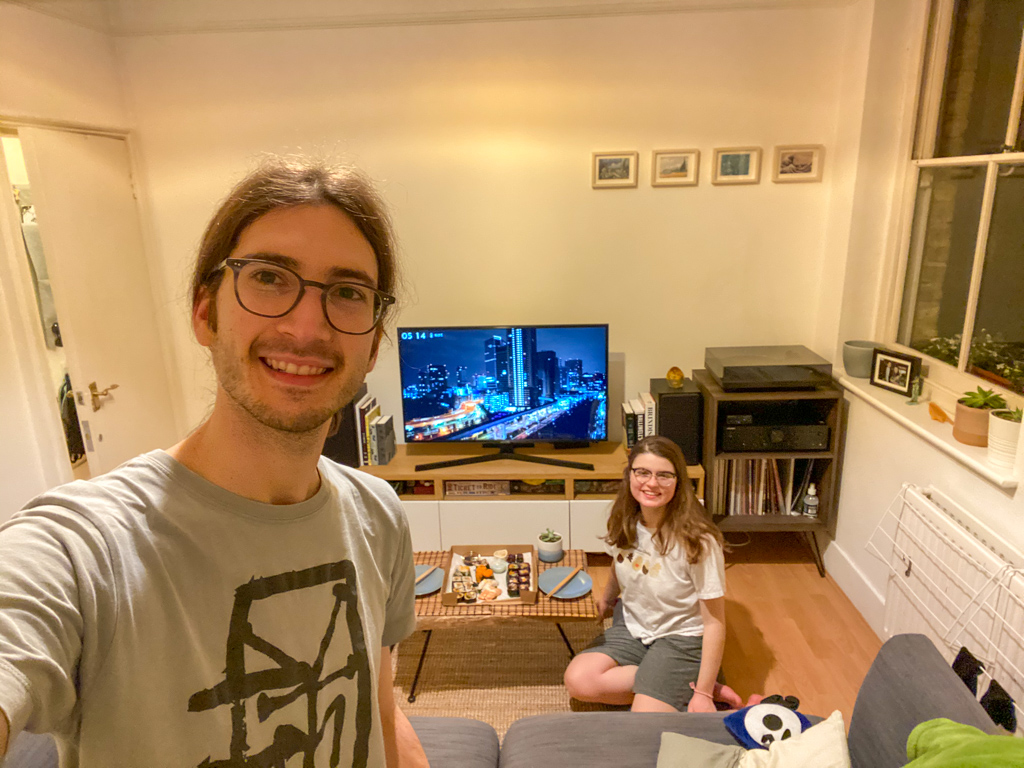
 Another evening we ordered takeaway from another local business, Kakki Katsu. They are katsu and teriyaki specialists. Neither of us had tried katsu curry before, so we thought why not during our staycation? Victor got chicken katsu curry, while I got the pumpkin version. I have to say, my vegan version was absolutely delicious. The sweetness of the pumpkin really complimented the saltiness of the curry sauce.
Another evening we ordered takeaway from another local business, Kakki Katsu. They are katsu and teriyaki specialists. Neither of us had tried katsu curry before, so we thought why not during our staycation? Victor got chicken katsu curry, while I got the pumpkin version. I have to say, my vegan version was absolutely delicious. The sweetness of the pumpkin really complimented the saltiness of the curry sauce.
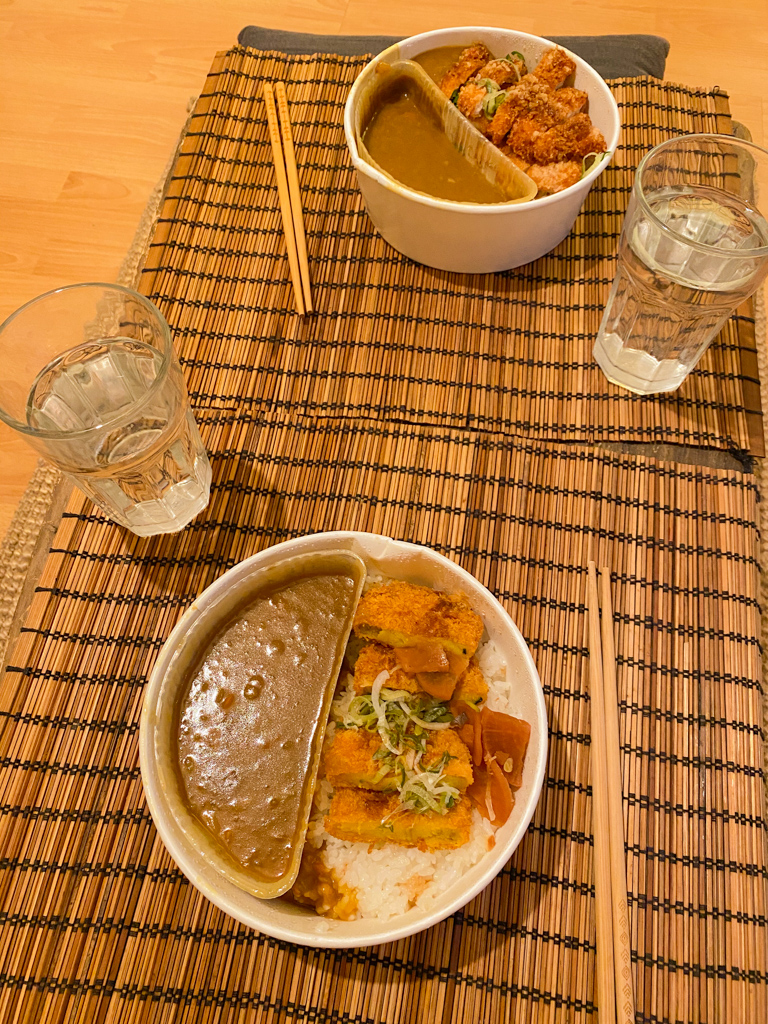 Amongst all the rice dishes we also made sure to have tons of fruit! We bought some speciality fruit, including fruit commonly eaten in Japan such as Asian pears and kumquats.
Amongst all the rice dishes we also made sure to have tons of fruit! We bought some speciality fruit, including fruit commonly eaten in Japan such as Asian pears and kumquats.
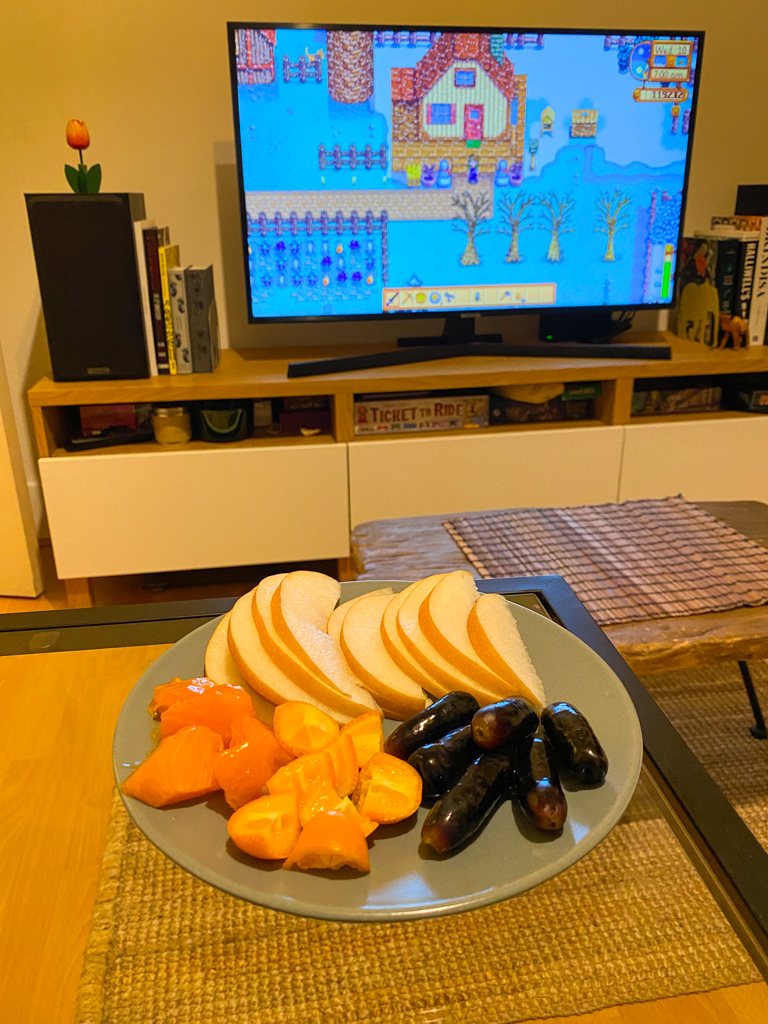
Tea Ceremony
One afternoon we held our own Tea Ceremony. It’s a traditional ritual, being a ceremonial way of preparing, serving and drinking green tea (matcha). You can read all about it here, but essentially it’s all about sticking to certain steps. What I thought was particularly interesting was the preparing of both a thick matcha and then a thin match. Thick matcha, also known as “koicha matcha”, is blended in a ratio of 3:1, 3 tsp matcha to 1 cup hot water. Thin matcha, known as “usucha matcha” is blended in a ratio of 1:1, 1 tsp matcha to 1 cup hot water. It is then whipped with the bamboo whisk until frothy before being served to guests.

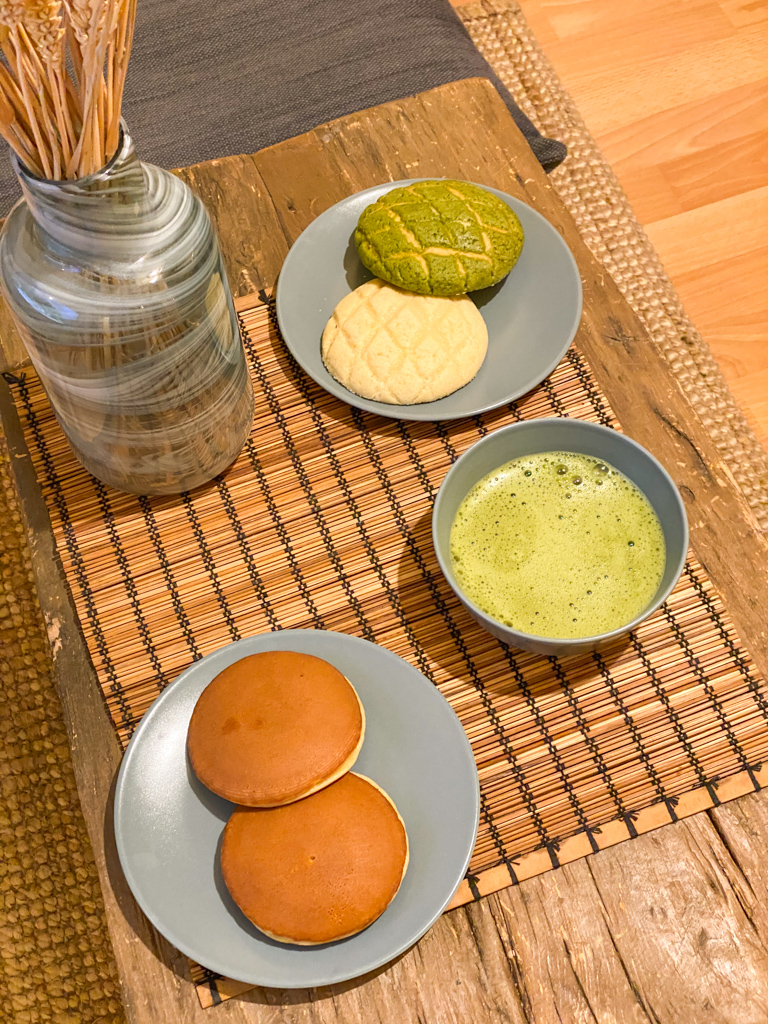
Alongside the tea, it’s typical to serve wagashi, traditional Japanese confections. There are so many types, like dango, mochi, taiyaki and anmitsu. We opted for dorayaki, a pancake sandwich. The filling is typically red beach, but nowadays there are so many flavours. We chose custard and then red bean and cream cheese. Both were delicious. And while not wagashi, we also served melon pan. It’s a type of sweet bun made from enriched dough. The name comes from the fact that it looks like a cantaloupe.
Onsen Experience
Another activity we did was our very own onsen experience. Onsen (温泉) is the Japanese word for hot spring. Onsen water is considered to be particularly special with its healing properties. Japanese people typically look for two things when it comes to enjoying the water: the heat and the minerals. To recreate this experience at home for our staycation, we filled our bath at the highest temperature and even added boiling water to increase the heat. I also stirred in some bath salts to get some minerals.
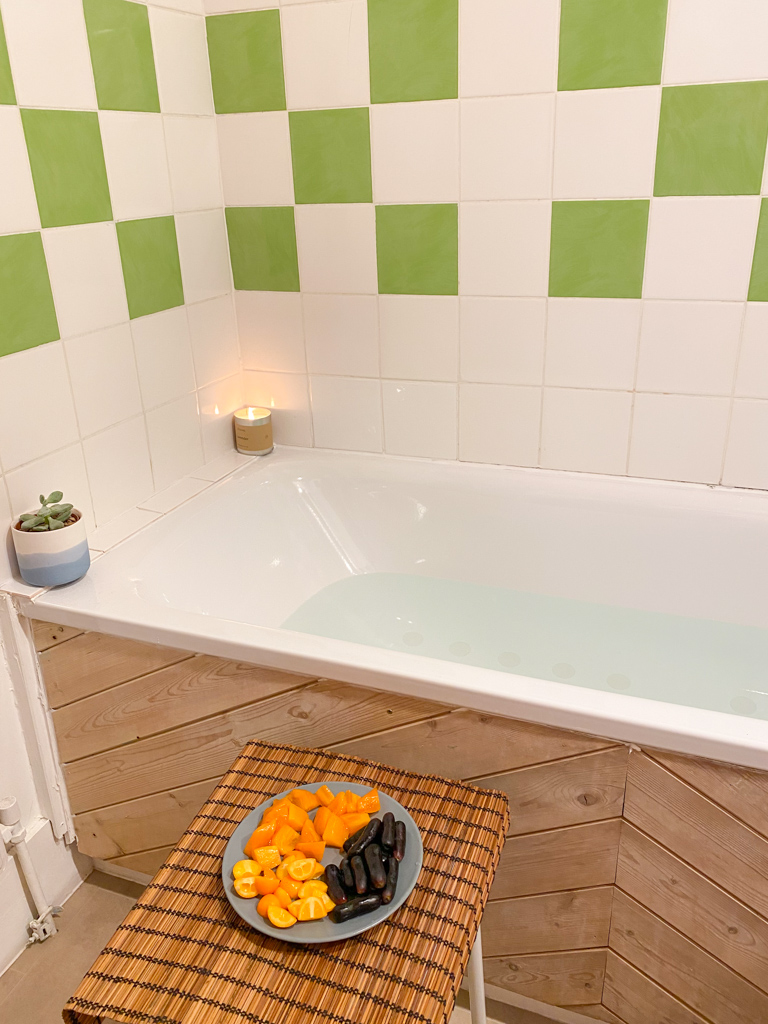 Having an onsen experience is also about creating a mood. We placed some candles around the bathtub, and also prepped some fresh fruit to keep us hydrated and fresh while the steam surrounded us.
Having an onsen experience is also about creating a mood. We placed some candles around the bathtub, and also prepped some fresh fruit to keep us hydrated and fresh while the steam surrounded us.
Activities
Besides the Virtual Tours, we also did a ton of other activities. Each morning we did some Rajio Taiso (radio callisthenics). It’s a radio program that broadcasts a set of warm-up exercise guidelines along with music. In Japan, NHK, Japan’s public broadcasting company, broadcasts the program from 6:30 am every morning on NHK Radio 1. It lasts for approximately 10 minutes. 20% of the country is said to particulate in radio callisthenics regularly… that’s 25 million people!
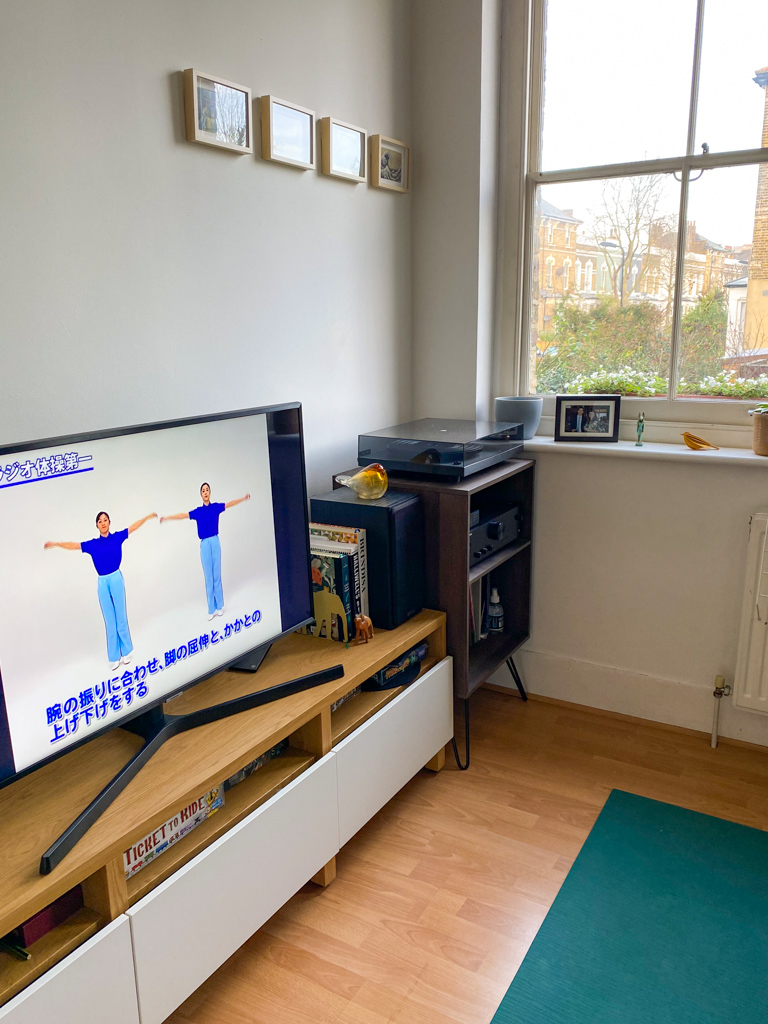 We went for a walk each day, and on one of our outings, we even visited a Japanese cafe called Toconoco. As I mentioned, this staycation was a bit odd as we had to stay physically at home most of the time. However, it was great to make this brief pitstop. I got a matcha latte (because why not) and it honestly is the best matcha latte I’ve had in London. I can tell the matcha was properly made with high-quality leaves. It tasted so good!
We went for a walk each day, and on one of our outings, we even visited a Japanese cafe called Toconoco. As I mentioned, this staycation was a bit odd as we had to stay physically at home most of the time. However, it was great to make this brief pitstop. I got a matcha latte (because why not) and it honestly is the best matcha latte I’ve had in London. I can tell the matcha was properly made with high-quality leaves. It tasted so good!
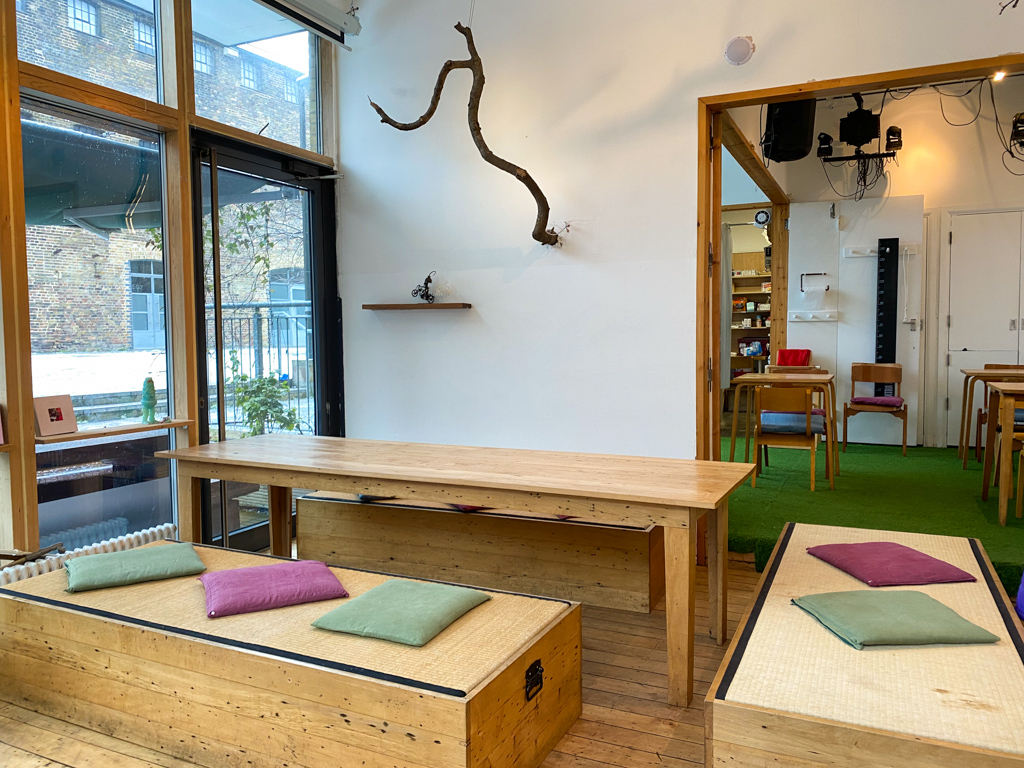
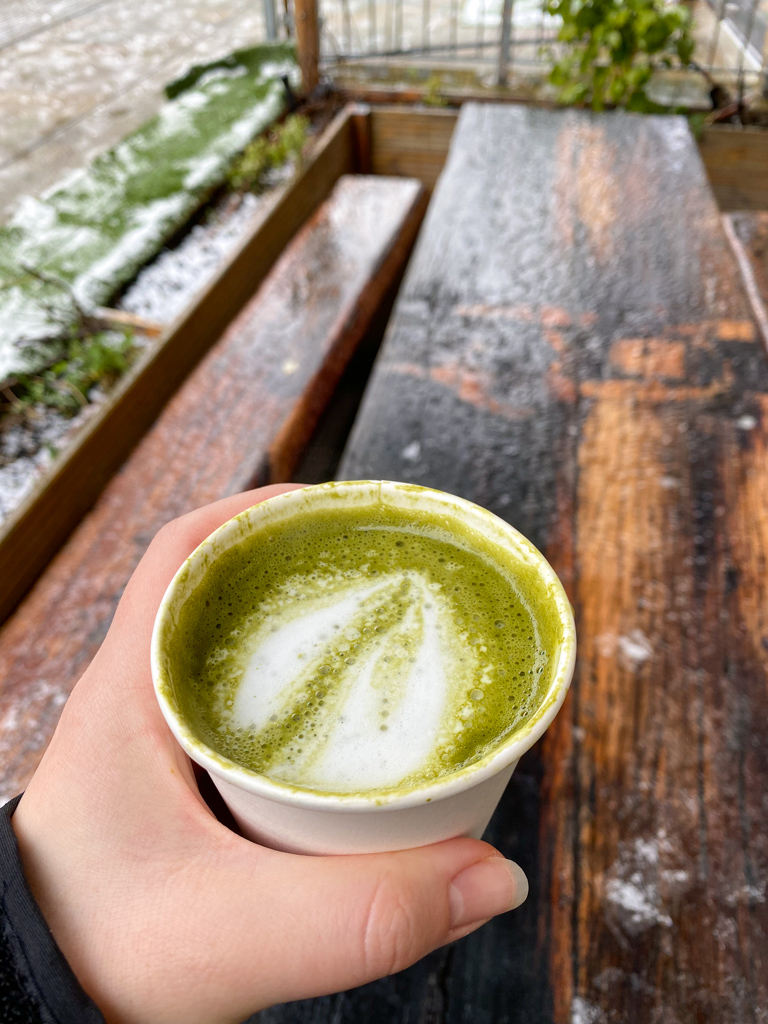 We also played several Japanese games. Origami is an obvious choice, but there are tons of other traditional games to try. If there are 3 or more of you, you can try playing a card game like Daihinmin, Karuta or Shichi Narabe. And, if there’s just two of you, why not play Japanese chess (shogi) or Riichi Mahjong? Finally, if you’re solo you can find these games online too.
We also played several Japanese games. Origami is an obvious choice, but there are tons of other traditional games to try. If there are 3 or more of you, you can try playing a card game like Daihinmin, Karuta or Shichi Narabe. And, if there’s just two of you, why not play Japanese chess (shogi) or Riichi Mahjong? Finally, if you’re solo you can find these games online too.
And while not a Japanese game, we also played Sushi Go, because I mean… sushi! It’s a fast-paced and incredibly fun pick and pass card game. I also love the adorable illustrations.
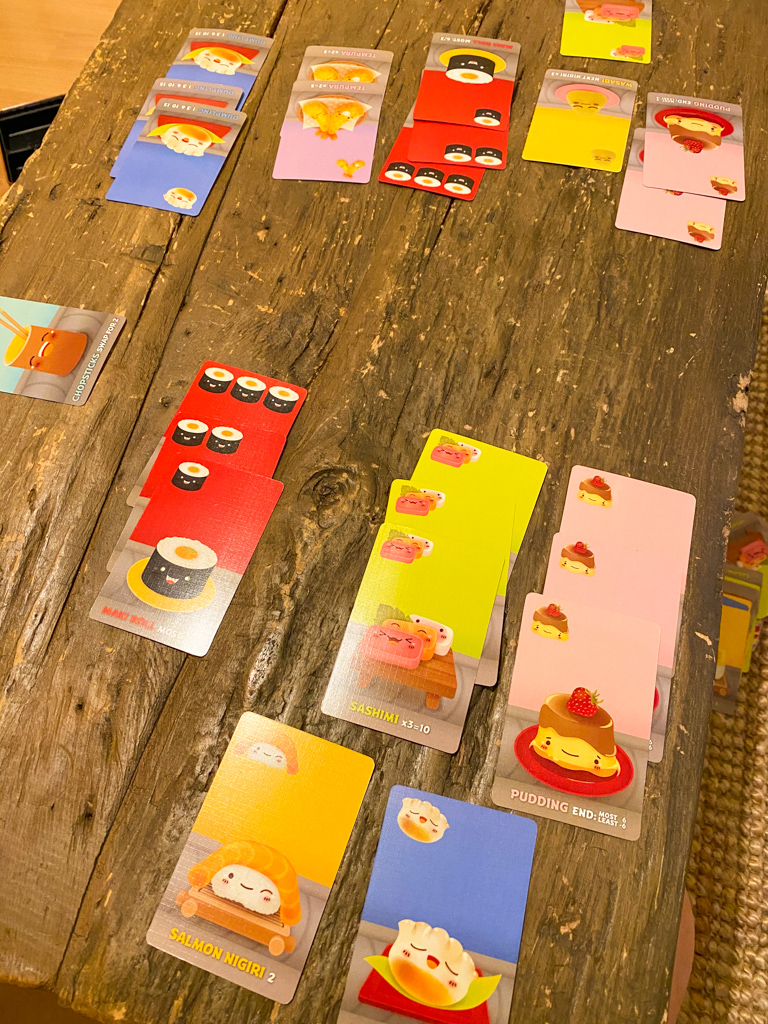 In the evening, we read manga. There are lots of great options, even if you’ve never read one before. I opted for Sailor Moon, but there are so many genres out there to try.
In the evening, we read manga. There are lots of great options, even if you’ve never read one before. I opted for Sailor Moon, but there are so many genres out there to try.
TV Entertainment
In terms of TV, we, of course, watched Japanese movies and TV shows. On our first evening, we watched Jiro Dream of Sushi, a documentary about 85-year-old (at the time) sushi chef, Jiro Ono. It was incredibly fascinating. There are so many Japanese movies you can watch. Here are some other options: A Whisker Away, Paprika, Little Miss Sumo, Mother, Floating, Weeds, Tampopo, and Yojimbo.
We also watched sumo wrestling match highlights on Youtube. I highly recommend reading this article titled “11 Amazing Things You Probably Never Knew About Sumo Wrestling” before watching a match, as it explains a lot of the ceremonial and cultural significance of sumo wrestling.
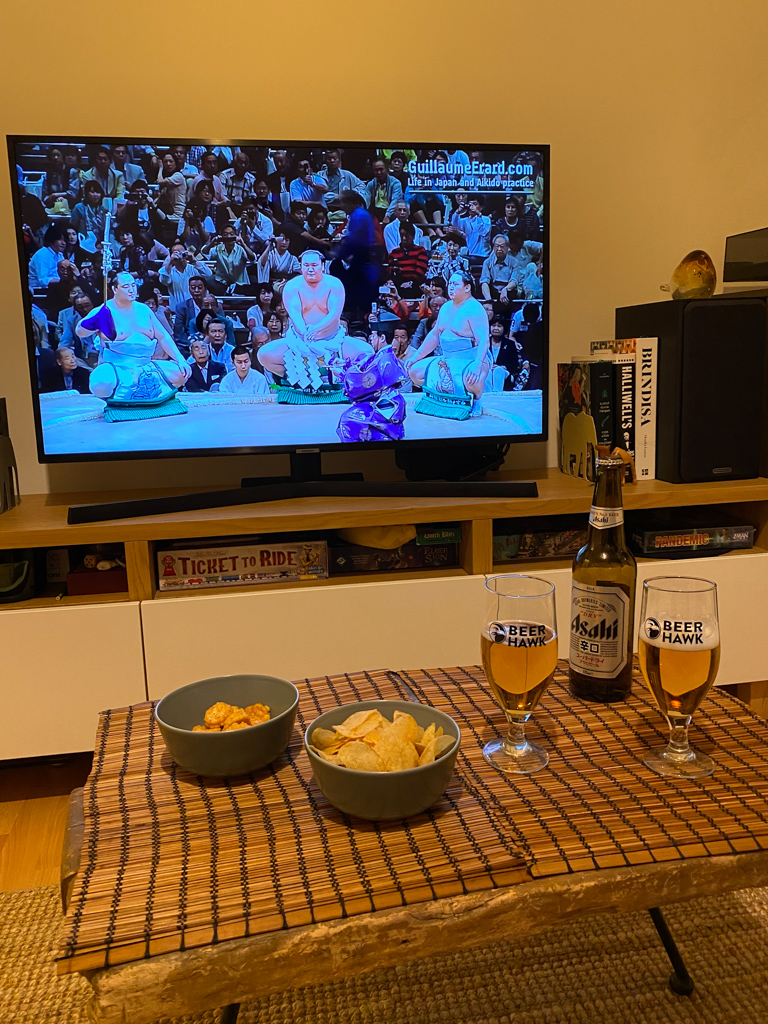 We also watched some anime tv shows like Violet Evergarden and Steins;Gate. In the morning I also loved watching Rilakkuma and Kaoru (it’s so cute) and in the evening food shows like Midnight Diner: Tokyo Stories and Samurai Gourmet.
We also watched some anime tv shows like Violet Evergarden and Steins;Gate. In the morning I also loved watching Rilakkuma and Kaoru (it’s so cute) and in the evening food shows like Midnight Diner: Tokyo Stories and Samurai Gourmet.
And there you have it! It takes a bit of planning, but you can have a wonderful staycation within the confines of your own home. My Japanese-inspired staycation was so much fun, and I’m ready now more than ever to visit Japan someday. But in the meantime, I’m already planning my next staycation… France anyone?
What do you think? Would you host your own staycation at home?


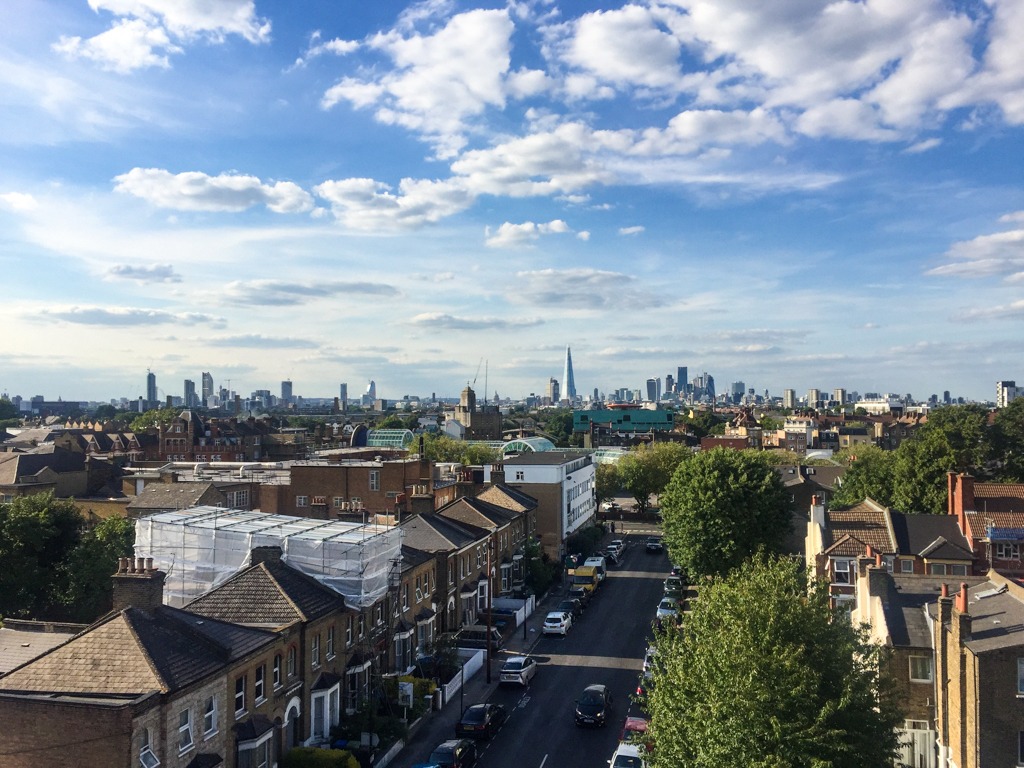
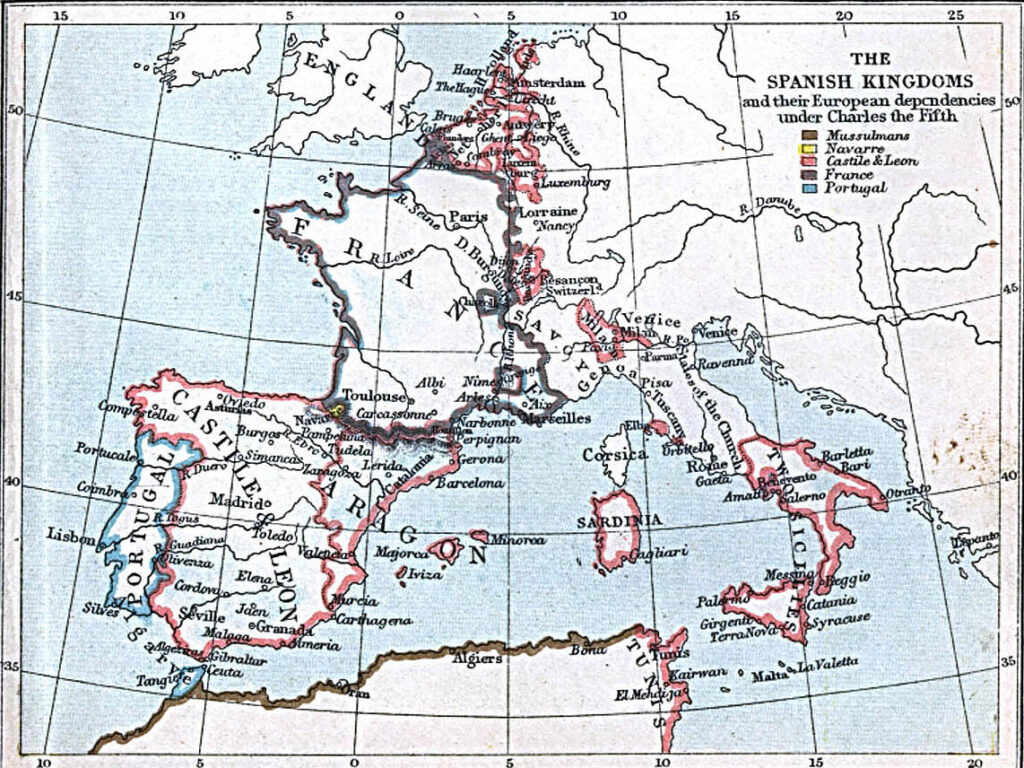
No Comments